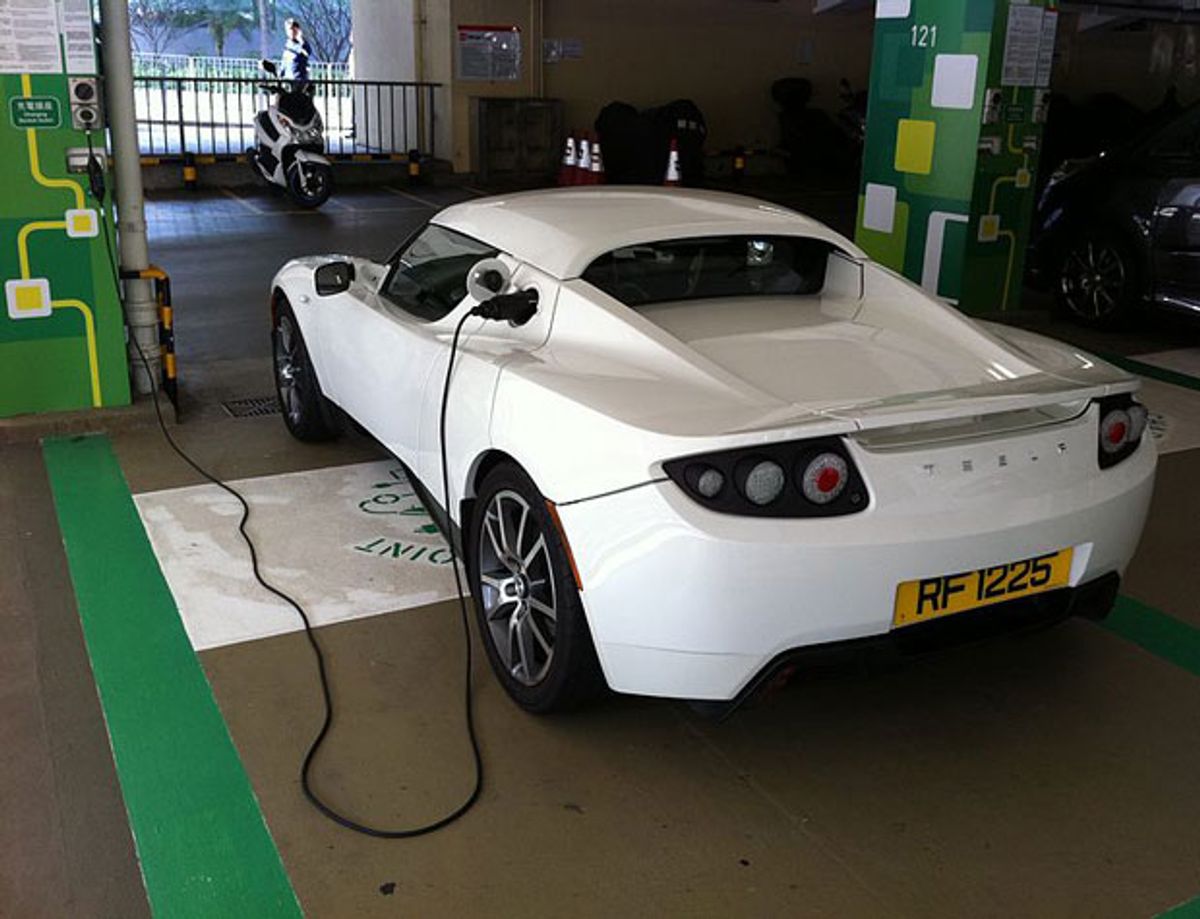Researchers at MIT and Sandia National Laboratory have made some long-awaited progress in lithium-air batteries. The research has provided insight into the electrochemical reactions that occur when they are being charged.
Lithium-air batteries promise five to 10 times greater storage capacity than traditional lithium-ion batteries, leading many to believe that they may hold the key to turning electrical vehicles from a niche market to a much larger segment of the automotive industry.
There’s no question that electric vehicles continue to grab headlines, like the Tesla Model S, which recently won Consumer Reports' highest rating yet for an automobile. I suppose the Consumer Reports editors must not be bothered by its 425 kilomter range or the hours-long refueling.
To bring EVs more in line with what people expect from their fossil-fuel-powered cars—namely, a 650-kilometer driving range and a about 2 minutes to fill it up again for the next 650 kilometers—there will need to be some significant improvements to the batteries that power these all-electric vehicles.
While there have been improvements to the lithium-ion (Li-ion) batteries that are now used to power EVs, it’s long been rumored that technologically speaking we may have been barking up the wrong tree with Li-ion batteries.
To get to the point where batteries have the energy density to compete head-to-head on performance with fossil fuels they will need to reach around 10 00 Wh/kg. If you improved Li-ion batteries to twice their capabilities of where they are today, they would still only reach 400 Wh/kg. As former Secretary of Energy Stephen Chu outlined, battery technology will need to have six to seven times higher storage capacity than today’s batteries to be competitive with the internal combustion engine.
This is where lithium-air batteries step in with their ability to offer up to ten times the storage capacity of the Li-ion battery. However, to date these batteries have significant challenges for use in anything outside of highly-controlled laboratory environments.
The MIT and Sandia National Lab researchers, in work that was published the ACS journal Nano Letters (“In Situ Transmission Electron Microscopy Observations of Electrochemical Oxidation of Li2O2), used transmission electron microscope (TEM) to peer into one of the trouble spots in the further development of these batteries: the reaction known as oxygen evolution.
It was in this reaction that the researchers observed for the first time the oxidation of lithium peroxide, which is the byproduct material created during the discharge of a lithium-air battery. The observations revealed that the lithium peroxide forms primarily at the interface of the substrate, which is made of multiwalled carbon nanotubes.
In this location, the lithium peroxide acts as resistance to the flow of electrons and handicaps the charging of batteries. However, the researchers also discovered that during charging, when the electrons are passing through the carbon nanotubes, the lithium peroxide particles that had formed during discharge began to shrink. This means that if electron transport for these batteries can be improved these batteries could be made to charge much more quickly than previously had been thought.
"This work has identified the key limiting condition, electron transport … providing a critical contribution,” says Jie Xiao, a researcher at Pacific Northwest National Laboratory. This is a great example of how fundamental research can significantly improve our understanding to resolve challenges in practical devices. The information provided in this paper will benefit the rational design of the air electrode of lithium-air batteries.
While this research still doesn’t show a clear path for these batteries out of their current laboratory use, it may make better sense to pursue a battery technology for electric vehicles that has at least the promise of making them performance competitive with fossil-fuel-powered automobiles.
Photo: Creative Commons
Dexter Johnson is a contributing editor at IEEE Spectrum, with a focus on nanotechnology.



